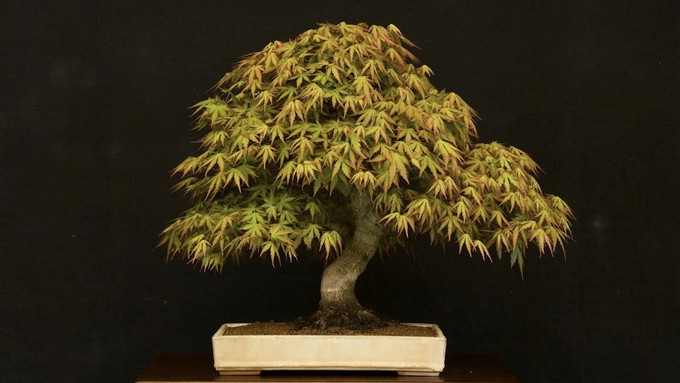
American Bonsai Association, Sacramento, welcomes public to bid at Shepard Center

This little maple was among the winners at the 2023 American Bonsai Association, Sacramento, bonsai show. Take home your own bonsai at the ABAS auction on Tuesday, Sept 26. Courtesy American Bonsai Association, Sacramento
These little trees in pots can go for big money. Here’s your chance to own your own collectible bonsai while helping this hobby continue to flourish in the City of Trees.
On Tuesday, Sept. 26, the American Bonsai Association, Sacramento, hosts a live auction of bonsai at Shepard Garden and Arts Center in McKinley Park. Admission to the auction is free and the public is encouraged to attend.
Doors open at 6 p.m. with a preview of the trees to be sold. The bidding starts at 6:30 p.m.
Expect to find top-class trees, some of them decades old and carefully tended. Others are just getting started. The auction benefits the club, which has been active since 1958.
This sale also helps individual members. Several trees will be offered on consignment by club members from their own collections.
Although these trees are little, they can add up; these avid collectors thin their forests – to make room for more bonsai. The winners are the bidders who take home great trees at good prices.
“Don’t miss a great opportunity to purchase good-quality bonsai material,” says the club.
Shepard Center is located at 3330 McKinley Blvd., Sacramento.
Details: https://www.abasbonsai.org/.
Comments
0 comments have been posted.Sacramento Digs Gardening to your inbox.
Sites We Like
Garden Checklist for week of July 21
Your garden needs you!
* Keep your vegetable garden watered, mulched and weeded. Water before 8 a.m. to reduce the chance of fungal infection and to conserve moisture.
* Feed vegetable plants bone meal, rock phosphate or other fertilizers high in phosphate to stimulate more blooms and fruiting. (But wait until daily high temperatures drop out of the 100s.)
* Don’t let tomatoes wilt or dry out completely. Give tomatoes a deep watering two to three times a week.
* Harvest vegetables promptly to encourage plants to produce more. Squash especially tends to grow rapidly in hot weather. Keep an eye on zucchini.
* Pinch back chrysanthemums for bushy plants and more flowers in September.
* Remove spent flowers from roses, daylilies and other bloomers as they finish flowering.
* Pinch off blooms from basil so the plant will grow more leaves.
* Cut back lavender after flowering to promote a second bloom.
* It's not too late to add a splash of color. Plant petunias, snapdragons, zinnias and marigolds.
* From seed, plant corn, pumpkins, radishes, winter squash and sunflowers.